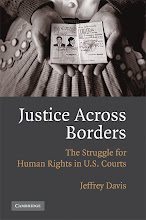An injustice that I am interested in discussing is child labor and slavery in the cocoa plantations of Africa. I watched a documentary on the subject a few years ago and I thought this assignment was the perfect opportunity to research the matter and bring awareness to this injustice.
The United Nations created the International Conventions on Child Labor. In convention No. 182 on the Worst Forms of Child Labour, 1999, the Convention defines these worst forms, “to be prohibited to all persons under 18 years, as all forms of slavery or practices similar to slavery, such as the sale and trafficking of children, debt bondage and serfdom and forced of compulsory labour, including forced of compulsory recruitment of children for use in armed conflict.” Slavery or forced child labor is illegal under the United Nations. This applies to the cocoa plantations that use child trafficking to get workers.
70% of the world’s cocoa supply comes from Western African countries, mostly Ghana and the Ivory Coast. The cocoa they grow and harvest is sold to a majority of chocolate companies, including Hershey, Mars, Nestle, and Kraft, some of the largest chocolate companies in the world. 60% of the Ivory Coast’s export revenue comes from its cocoa. Demand for cheap cocoa has been growing over the years as the chocolate industry has expanded. Cocoa farmers, on average, earn an income below the poverty line at less than two dollars a day. When a farmer is making less than two dollars a day, he will not want to spend much if any on labor. Children usually decide to work at a young age due the intense poverty in Western Africa, especially in Burkina Faso and Mali. Children are told by traffickers that cocoa plantations pay well when it is not so. The poverty in these countries may even lead to relatives selling their children to traffickers. They may never see their families again.
A typical workday for children starts at 6 in the morning and ends in the evening. Children use chainsaws to cut the pods down in the cocoa forest. Other children climb the cocoa trees to cut bean pods using a machete which is extremely dangerous because most children are not tall enough to see what they are doing. Children may have to carry bags up to 100 pounds through the forest. Children as young as 10 spray the pods with these toxins without wearing protective clothing. There is physical violence as well on cocoa plantations. Workers that work to slow or try to escape will be whipped or beaten. Cocoa beans are inedible until processed in a chocolate factory so most of these slaves have never eaten chocolate, the fruits of their labor. A man that escaped slavery said of people that eat slavery produced chocolate, “When people eat chocolate, they are eating my flesh.”
Lawmakers in the past have tried to label chocolate when it is slave-free just like when a product is certified organic. This did not go through due to intense lobbying against it by chocolate manufacturers. It is also being suggested that more of these chocolate farmers be entered in Fair-trade producer groups so that they get minimum pay to can afford paid workers and not use slaves. What we can do is be aware of what we are buying. There are also organizations to helps children who escaped cocoa slavery.
References:


No comments:
Post a Comment